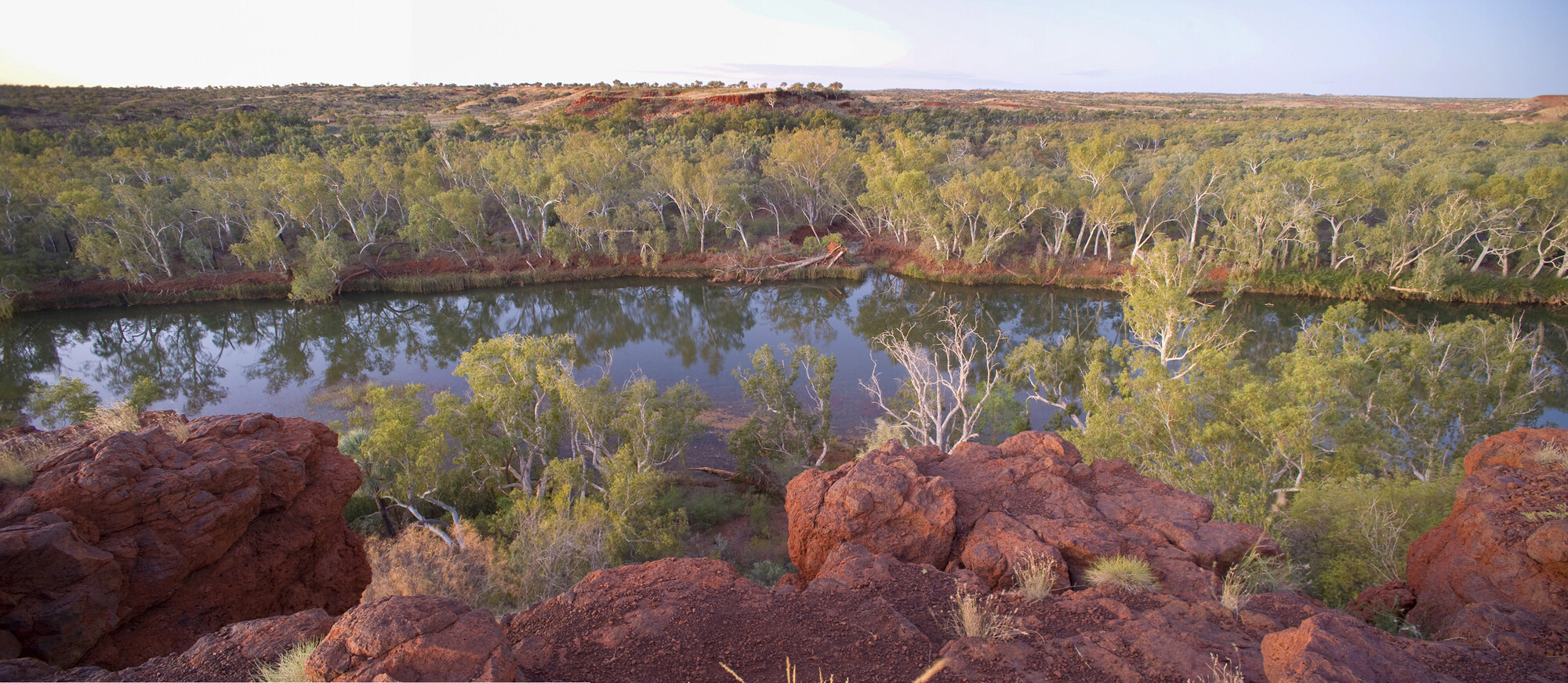In an animated film made in 2019, Yinjibarndi Elder Middleton Cheedie narrates the Dreamtime story of how the Fortescue River came into being after two boys angered Barrimirndi, the great rainbow sea serpent:
Our story begins with two young Yirdiyarra boys who were being put through Birdarra Warmulu Law – an initiation ritual. Before their initiation, they became very hungry and went out to hunt. They captured a Gurrangurran – a mulga parrot – and roasted it on a roaring fire. That smoke from the fire drifted across the land and to the sea, waking the great Barrimirndi from the depths. The burnt feathers angered Barrimirndi, as the Gurrangurran was sacred to the Creation Spirits. You see, it was against Birdarra Law to eat one.
And so began Barrimirndi’s long journey to find the lawbreakers, a saga resulting in the formation of Jarnda-Nyirra (the Fortescue River), and its permanent waterholes and aquifers. Nhanggangunha (Deep Reach Pool, in Millstream National Park) was created when Barrimirndi found the two boys – ‘he burst from the ground, raising the young men high in a wananggaa – a willy’ and ate them. And the river started flowing when Barrimirndi released water to drown out the cries of the people mourning the boys’ loss.
Although this brief account does not do the story justice, it may help convey the cultural and spiritual importance of rivers and permanent waterholes to the Yinjibarndi people and other Traditional Owner groups along the Fortescue (the Kuruma, Ngarluma, Banjima and Nyiyiparli), and the deep responsibility they feel for keeping the river healthy. Middleton Cheedie closes the story of Barrimirndi with this warning:
Barrimirndi is still said to rest at the bottom of Nhanggangunha. That is why Ngarda – the Yinjibarndi people – protect this land. If we anger Barrimirndi again, he could leave, taking all our water with him.
For Yirdjibarndi people, Jirndawirrinha (Millstream), with its many pools and springs, is one of their most significant places. These are not static waters created in the distant past, but living waters, where Barrimirndi still resides and that require ritual and spiritual maintenance.
It is not just the Fortescue. All the Pilbara’s major rivers and permanent pools are of great significance to their Traditional Owners, each named and tied to stories. While each local Traditional Owner group speaks for and has responsibility for their own country, they share creation stories across the landscape and responsibility for the health of rivers and pools and their creation beings. Their knowledge is closely tied to the utility of rivers and pools, and the resources they have provided over thousands of years as refuges. While management plans are in place for certain water bodies, Traditional Owners have expressed grave concerns about water use by industry and the impacts on rivers and pools.
